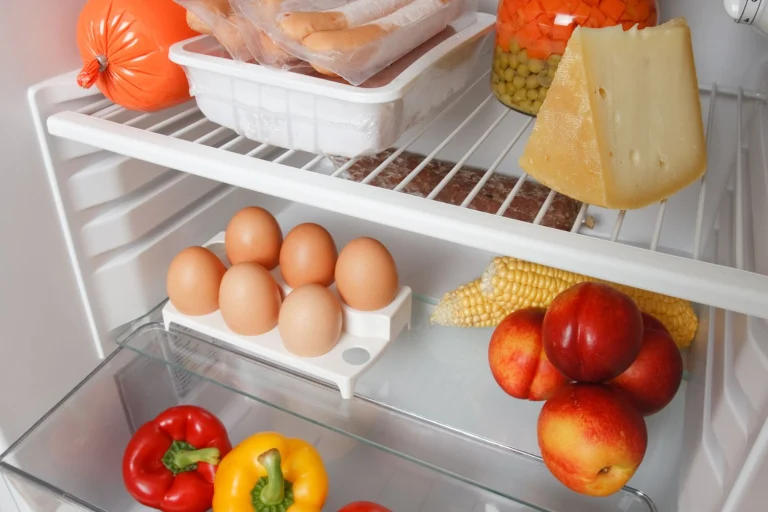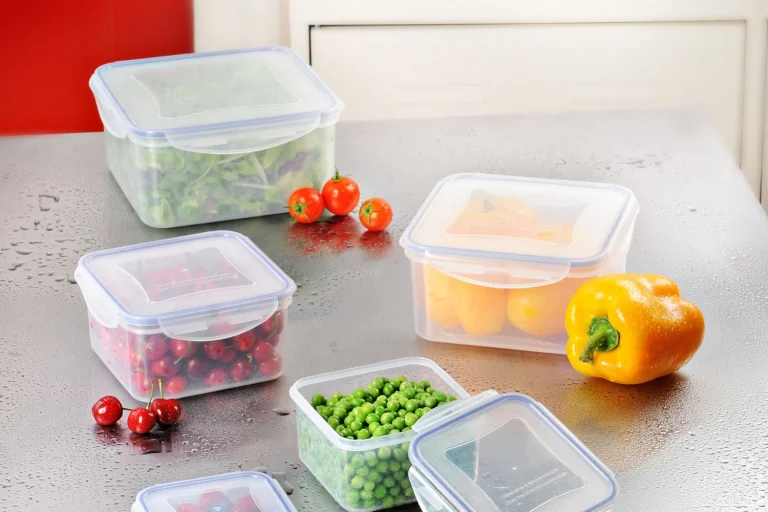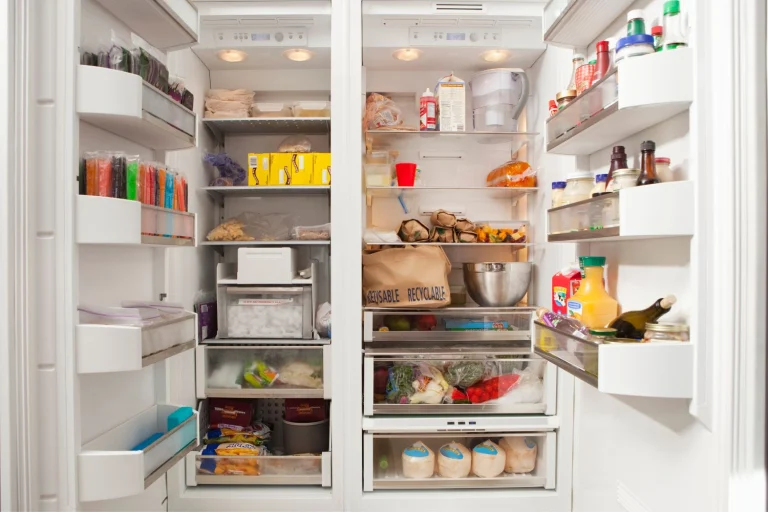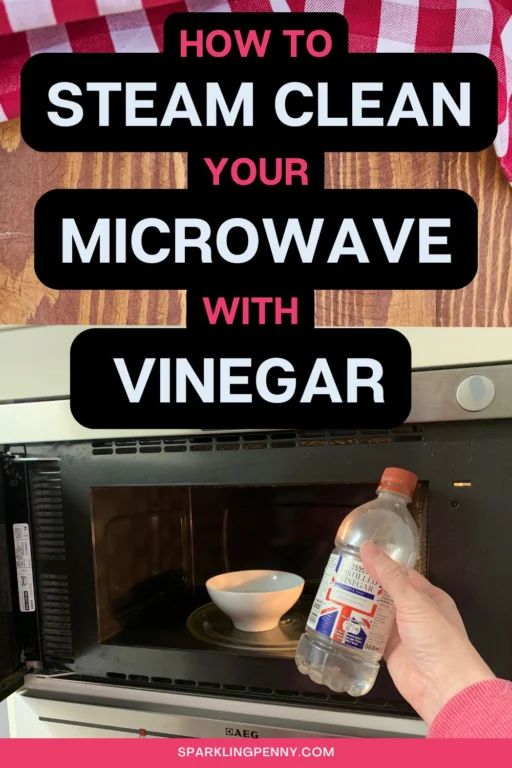A clean and well-organized refrigerator is essential for maintaining food safety and minimizing food waste. Knowing how to properly store and arrange items in the fridge can help prevent the spread of harmful bacteria, extend the shelf life of your food, and save you money by reducing the need to throw away expired or spoiled items.
When a refrigerator is clutter-free and efficiently arranged, it reduces the chances of forgetting about food left at the back of the shelves or lost in the corners.
With a few simple steps and guidelines, anyone can achieve a clean and organized refrigerator that promotes better food safety and reduces waste.
Heads up: I sometimes use affiliate links. When you click these links and make a purchase, I may get a small commission. It won't cost you anything but it helps me to run this site.
Why cleaning and organizing matters
Cleaning and organizing your refrigerator plays a crucial role in maintaining food safety and minimizing waste.
- A well-organized fridge prevents the growth of harmful bacteria, ensuring that the food you consume is fresh and safe to eat.
- An organized refrigerator also makes it easier to clean up spills and debris when they occur. When items are placed in their proper locations, it’s much simpler to spot and address spills before they turn into larger messes
- Maintaining an organized fridge allows you to be more aware of its contents, reducing the chances of food going bad before it’s used. This not only helps in preserving the freshness and quality of your food, but it also reduces waste and saves you money in the long run.
With a well-organized fridge, it’s easier to find what you need, which also leads to more efficient meal planning and preparation, as you can quickly see what ingredients you have on hand. This ultimately contributes to healthier eating habits, as it enables you to make better use of fresh produce and minimizes food waste.
Here’s how to give your refrigerator its much-needed makeover in five easy steps.
Step 1: Empty and clean your fridge

The first step in ensuring better food safety and minimizing waste is to empty your refrigerator.
Remove all the food items and check for spoilage or expiration dates, discarding any items that are no longer safe to consume. Remember to have a cooler handy for perishable items like milk and raw fish, while placing other less sensitive items in a separate location temporarily.
Next, it’s time to clean the interior of your fridge. First, detach all removable drawers and shelves. You can wash these components using warm, soapy water and a sponge or a microfiber cloth, which are highly absorbent and perfect for scrubbing down every inch of the surfaces.
To ensure thorough cleaning and sanitizing, prepare a solution of 1 tablespoon of liquid bleach per 1 gallon of water. However, this should only be done after the initial cleaning with warm, soapy water. If you prefer to skip the bleach (as I do) make up a spray bottle of equal parts, water and distilled white vinegar.
Use a soft microfiber cloth to wipe down the fridge’s interior, doors, and seals. Don’t forget to clean under and behind the fridge, using a long brush or sponge. When done, make sure to dry off the surfaces with a clean tea towel or paper towels.
Step 2: Organize food by temperature zones
Now that your refrigerator is clean, it’s time to organize your food items by temperature zones.
This helps maintain food safety and reduce waste by ensuring that each food is stored at its optimal temperature for freshness.
Upper shelves
Store leftovers and drinks on the upper shelves. This area is suitable for ready-to-eat foods with a shorter shelf life, such as yogurt, cheese, and deli meats. It is also the ideal spot for storing items that require a slightly warmer temperature.
Middle
Next, place foods that require consistent temperatures, like eggs, deli meats, sour cream, and soft cheeses, in the middle of your fridge. This part of the refrigerator maintains the most consistent temperature.
Lower shelves
Use the lower shelves and drawers for items that require the coldest temperatures. This includes raw meats, poultry, and seafood, as well as fruits and vegetables that need to be stored at a lower temperature. To avoid cross-contamination, store raw meats separately from other foods and in sealed containers or bags.
Step 3: Store food in proper containers

Using the right containers for storing food in your refrigerator can make a significant difference in maintaining food safety and reducing waste. By choosing appropriate containers, you can ensure that your food stays fresh for longer periods and is protected from contamination.
First, consider using clear containers for your food items. This enables you to see the contents easily, helping you to keep track of what you have and prompting you to use up ingredients before they spoil. Clear containers also allow you to identify any spills or leaks more quickly.
Be sure to use containers with tight-fitting lids for foods like leftovers, cut fruits, and vegetables. Airtight lids prevent the spread of odors and potential cross-contamination from one food item to another.
Here are some recommendations for different types of containers:
- Use glass or plastic containers with tight-fitting lids for keeping leftovers and prepped ingredients fresh.
- Store leafy greens and delicate herbs in airtight containers or plastic bags with a bit of air inside.
- Wrap raw meats, poultry, and fish in plastic wrap or foil and place them on a plate or in a shallow container to catch any drips.
- Store dairy products like yogurt and sour cream in their original containers, but be sure they are sealed well.
- Keep fruits and vegetables in separate crisper drawers to prevent the release of ethylene gas, which can cause premature ripening in some produce.
Step 4: Label and rotate items

Proper labeling and rotation of food items in your refrigerator are crucial for better food safety and minimizing waste. Labels help you identify what’s inside a container, while rotation ensures that older foods are used before they expire, reducing the possibility of spoilage.
Begin by creating clear labels for all of your containers, including the food item’s name and expiration date. Using masking tape and a permanent marker, or purchasing pre-made labels, will make this process easier. Ensure that the labels are visible and easily readable, so you know exactly what’s inside each container and when it needs to be used by.
When it comes to food rotation, follow the FIFO (First In, First Out) method.
This involves placing newer food items towards the back of the shelves while bringing older items to the front. This arrangement ensures that you use up items with earlier expiration dates before moving on to more recently bought foods, thus minimizing waste. According to Real Simple, rotating food items whenever you add new groceries to your fridge is a practical way to implement the FIFO method.
Incorporate these techniques into your food organization strategy by following these steps:
- Label all containers with the food item’s name and expiration date.
- Ensure labels are visible and easily readable.
- Organize items on shelves by placing newer foods towards the back and older items in the front, following the FIFO method.
- Rotate food items whenever adding new groceries to your fridge.
Step 5: Maintain a fridge cleaning and organizing routine

Maintaining a regular fridge cleaning and organizing routine is crucial for food safety and minimizing waste. Start by setting a schedule for cleaning, either weekly or biweekly, depending on your needs. This helps ensure your refrigerator remains a safe and efficient space to store your perishables.
Consider the following steps when creating your maintenance routine:
- Check the door seals: The door seals play a significant role in keeping cool air in and ensuring optimal fridge efficiency. Regularly inspect the seals for food residues and clean them twice a year using a toothbrush and a mixture of baking soda and water.
- Utilize proper storage containers: Reduce waste by using proper storage containers, such as airtight containers for dry goods and produce keepers for fruits and veggies. This extends the shelf life of ingredients and maintains their freshness longer.
- Rotate food items: Adopt a first-in, first-out (FIFO) method when organizing your fridge contents. This helps you prioritize consuming the oldest items first while avoiding unnecessary spoilage, food waste, and unsavory smells.
- Label and date perishables: Clearly label and date your perishables to track their freshness and promote accountability for using them before they spoil. This tip is especially useful for leftovers, sauces, and other items prone to being overlooked or forgotten.
Wrapping up
In concluding this comprehensive guide on cleaning and organizing your refrigerator, remember that the primary objectives are enhancing food safety and reducing waste.
Following these tips and recommendations will enable you to achieve a more efficient, organized, and clean refrigerator.
Key points to remember include storing uncooked meats at the bottom to prevent cross-contamination, labeling perishable items with dates for easy identification, and cleaning the fridge regularly with sanitizing wipes or hot soapy water. Moreover, ensure that you rotate your groceries in a way that encourages the consumption of older items before purchasing new ones, reducing waste.
Maintain an organized fridge with designated spaces for various food categories to ensure maximum efficiency in both storage and cooking. Embracing these best practices and incorporating them into your routine will ultimately lead to a cleaner, safer, and more efficient kitchen experience.










